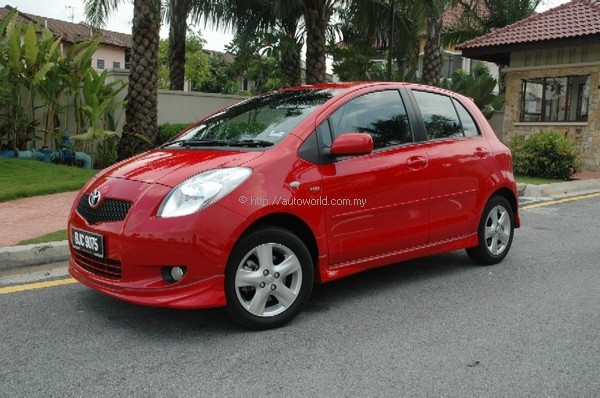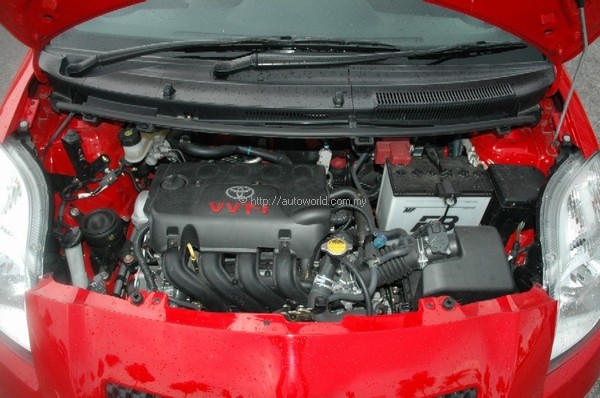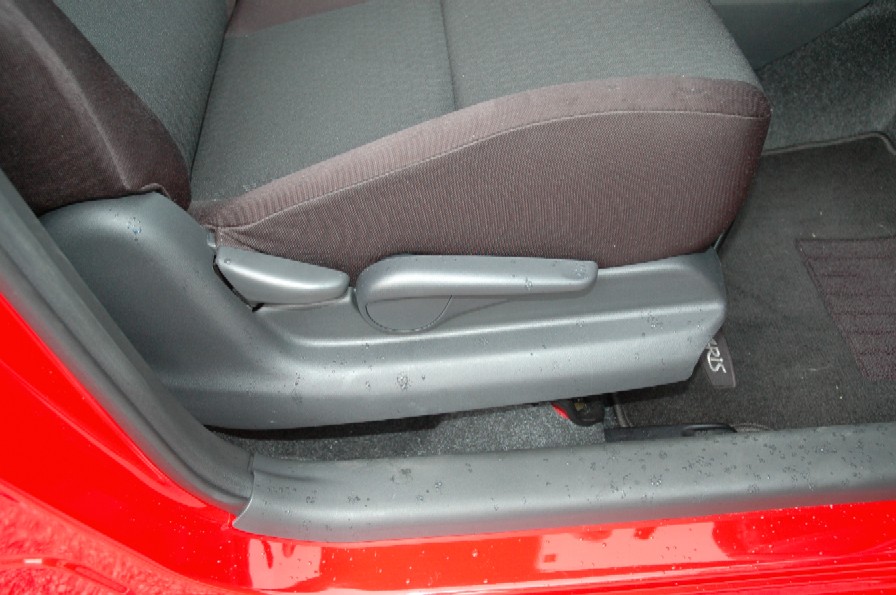Toyota Yaris Road Test
If you want to buy a small Toyota vehicle that is economical to own, but want something a little more ‘gungho’ than the Vios, then you would be looking at the Yaris as the alternative. The Toyota Yaris is to the Vios, what the Honda Jazz is to the City. Both are the trendy offshoots of the bread and butter small family cars; the Yaris uses the same mechanicals as the Vios, and the Jazz has a similar relationship to the City.
What the Yaris offers to the end-user is a more exciting (at least, to the young and the young at heart,) and trendy looking machine. The Yaris is part of the on-going competition between Toyota and Honda to get into the buyers’ pocketbooks, each offering an alternative to the other’s available models. Some examples of this fierce rivalry can be seen: Vios versus City, Corolla versus Civic, Camry versus Accord, Wish versus Stream, Rav4 versus CRV. Competition is good, as the customers ultimately get the benefit of better products at competitive products.
Whereas the Jazz looks very much like the City save for the rendition at the rear to make it look more like a hatch, one would be hard put to imagine that the Yaris and Vios are related; Toyota have totally revamped the shape, and the Yaris has a totally new shape altogether. So far, everyone that came into verbal contact with us while we had the car has had nothing but good to say about the overall looks of the Yaris. It looks good, and the fact that our test car was of a bright red and was kitted out in the G-specifications with an attractive body-kit made it even more outstanding.
Inside, the seating configuration is typical of a hatchback vehicle, with split and foldable rear seats for additional versatility. The interior plastics are not of the highest grade (bearing in mind that this is a relatively low-cost vehicle), but ‘cheap does not have to look cheap, and Toyota seems to have made good by having the plastic surfaces textured. The instrument cluster follows that of the Vios, being placed in the centre of the dashboard, and takes some getting used to. Seats are fabric, and well contoured. There is plenty of legroom for both front and rear passengers, and Toyota have done well to eliminate the centre tunnel at the rear.
Vertically challenged drivers will appreciate the driver’s seat-height adjuster that allows one to raise or lower the height of the seat. This works well with the tilt-adjustable steering to get the optimum driving position.
Being of hatchback design and shorter than the Vios, there is some sacrifice in the boot space of the Yaris, not necessarily a minus point as far as Toyota is concerned, since those who need it can always opt for the Vios (which goes to show why a good product portfolio is important to a car maker’s success). Still, you can put in some light luggage for short or overnight adventures.
The engine of the Yaris is a 1.5 litre DOHC unit with variable valve timing, giving it excellent response to throttle. Rated at 109 PS, it makes the Yaris a fun car to drive without being too thirsty. The 42-litre fuel tank gave us 355 kilometres before the reserve light came on. That approximates to about 10 kilometres per litre, assuming 5 to 7 litres left in the system at reserve level, or something between 18 to 19 sen per litre (this figure is only approximate, and different drivers may get varying figures depending on how heavy footed one is). We did of course put the car through some hard driving as part of our testing, and that would have had a negative effect on the overall economy. Top speed was in the region of 170 to 180 km/hr, but the needle seems to be reluctant to move beyond the 160 km/hr mark.
Mated to the engine is a 4-speed automatic gearbox, electronically controlled, so it is a drive-by-wire arrangement between the throttle and the engine. The gear ratios are quite evenly spaced, giving a reasonably good take-off ratio in first gear, and 40 kilometres per hour in top gear. At 120 km/hr, the engine is at a relatively low RPM of 3000, and it is really pleasant to stay at this speed.
The suspension of the Yaris is made up of independent Macpherson struts at the front, with a stabilizer bar, while the rear is fitted with a torsion beam and another stabilizer bar. Damping is on the stiff side of firm, and although the vehicle handles well, the front could do with some softer springs; there is a tendency for the front to bob up and down especially over uneven surfaces on the highway. A little bit more ‘give’ would definitely improve the ride. Around corners, though, the Yaris gives a very good account of itself.
Safety features include ABS, EBD (Electronic Brake-force Distribution) and BA (Brake Assist). The driver’s side windows are auto up and down, with jam-protection. Door locks are powered, and power wing mirrors are standard too. Passive safety features include driver and front passenger airbags, and the front seats have ‘Whiplash Injury Lessening’ features.
Tagged with a price of RM99k with a little bit of change, the Yaris comes with a 3-year or 100,000 kilometres (whichever comes first) warranty package, and is fully imported as a CBU. There are two levels of trim to select from, with the ‘Sporty’ package (front bumper spoiler, side skirts, and rear bumper spoiler) costing a couple of thousand ringgit more.
Our test team enjoyed the Yaris during the time we had it, and found it to be an ‘eye turner’. Personally, I would have preferred the ride to be a little bit softer, as that would make it a little more comfortable to my behind, but I think the sporty young ones might just like it the way it is.











































